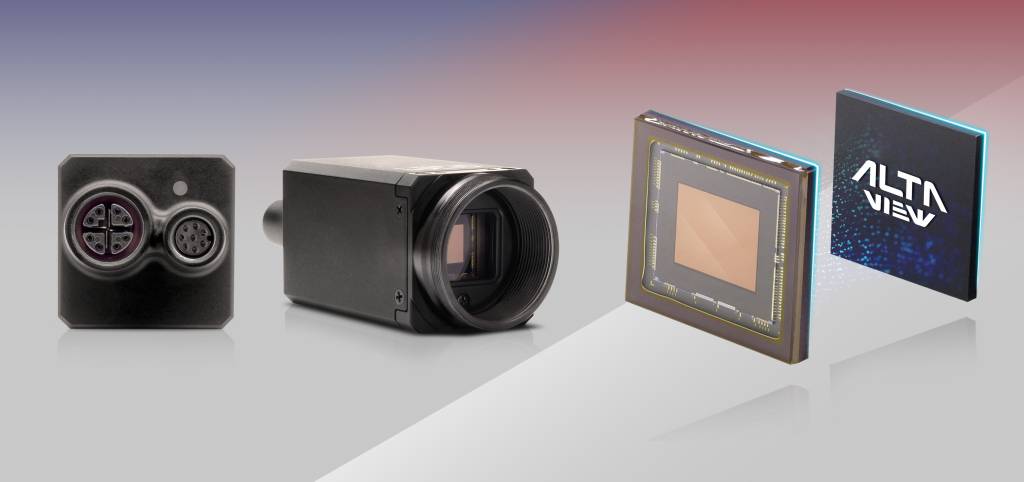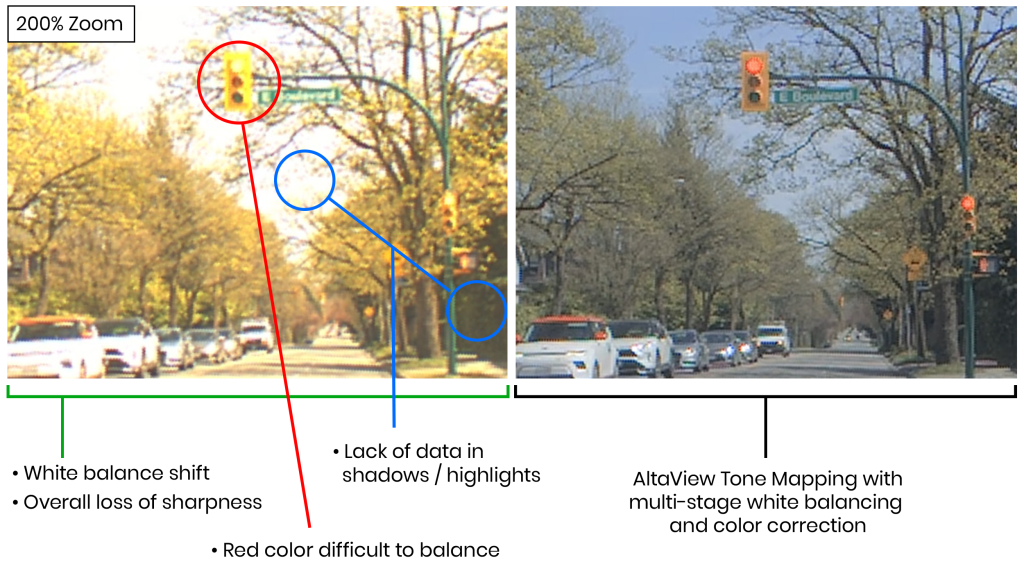
HDR cameras play a critical role by providing more data-rich imaging, but selecting an HDR camera for specific automotive challenges requires deeper consideration. They must function optimally across volatile and changing conditions, capturing quality images both day and night, enduring rain, and snow, and resisting dust, dirt, and temperature fluctuations. They must also tolerate the physical shocks and vibrations typical in automotive applications.
Both day and night imaging require a camera with low light sensitivity, low noise, and most importantly, high dynamic range (HDR). In imaging, dynamic range refers to the difference between the lightest and darkest tones. An HDR camera better captures details in both shadowed and bright areas. In contrast, non-HDR cameras must compromise, often resulting in over or underexposure, so that shadows or highlights are properly exposed only at the expense of the other. HDR cameras capture more scene information and are more suited to high-contrast environments with varying lighting conditions. Conventional HDR cameras sequence multiple exposures, one after another. This latency between exposures creates motion artifacts since movement between exposures leads to inconsistencies in the final combined image. Conventional HDR cameras also struggle with LED flickering because they often use short exposure times to capture images in bright conditions. These short exposures can align with the off period of an LED’s frequency (100 to 400Hz) resulting in the LED appearing off or flickering.

Elimination of Motion Artifacts
Automotive vision systems face four key challenges: unpredictable weather, limited dynamic range causing exposure issues, motion artifacts from traditional HDR cameras, and LED flickering. Lucid’s Triton HDR, utilizing Sony’s IMX490 HDR sensor and the AltaView on-camera tone mapping engine, effectively tackles these obstacles. The IP67-rated Triton HDR has a wide operating temperature range of -20 to +55°C ambient and features an M12 Ethernet connection that can use shielded cables up to 100m in length, enabling it to be integrated easily with other sensors in a vision system.
The camera captures 24-bit RAW images with a dynamic range over 120dB, eliminating the need for auto exposure or gain. It utilizes the sensor’s unique sub-pixel structure, with each pixel housing two photodiodes of differing light sensitivity. Each photodiode is read out with high- and low-conversion gains to create four 12-bit channels, which are combined into a single 24-bit HDR value on-sensor. This simultaneous exposure process eliminates motion artifacts, providing clear images despite vehicle or object movement. It also reduces LED flicker through longer exposure times enabled by the more sensitive photodiode, which averages out LED flickering for steady lighting.
On-Camera Tone Mapping Engine
Further enhancement comes from Lucid’s on-camera AltaView adaptive tone mapping engine. Tone mapping is a technique used in image processing to adapt colors from an HDR image to fit within the constraints of a lesser dynamic range image, thereby mimicking the appearance of the original HDR image. The AltaView engine processes the sensor’s 24-bit RAW data in real time, combining only the most data-rich areas into the final 8-bit RGB image. This results in 8-bit images with more details in the shadows and highlights and helps reduce development time by reducing image data volume and eliminating the need for off-camera tone mapping.
AltaView is designed for mobile sensing applications and has three key features. A single fixed exposure setting, made possible by the high dynamic range of the sensor, eliminates the need for auto-exposure, auto-gain, and custom LUTs or CCMs. Temporal backward flow filtering analyses previous frames, ensuring smooth brightness transitions and brightness flicker removal. Lastly, a two-stage white balance and color correction ensure color accuracy and preserves image sharpness. Through the combination of a robust, industrial camera design, Sony’s IMX490 HDR sensor, and AltaView’s adaptive tone mapping, the Triton HDR camera meets the demands of autonomous vehicles vision systems, delivering data-rich images with clarity, detail, and ease of use.
www.thinkLucid.com
